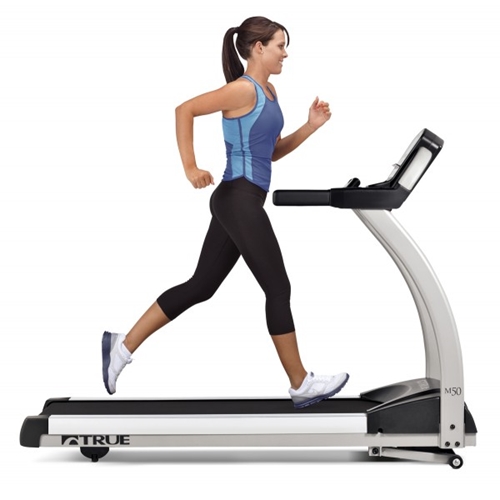
4 useful tips for new runners
 Congratulations on making a commitment to your health and setting a goal to get in better shape! Now that you’ve decided it’s time to start running on your home fitness treadmill, you may be wondering where to begin.
Congratulations on making a commitment to your health and setting a goal to get in better shape! Now that you’ve decided it’s time to start running on your home fitness treadmill, you may be wondering where to begin.
Running is a dynamic option for cardio fitness because you can choose to make it a solitary exercise or include running buddies for motivation. Additionally, while running itself is pretty straight forward, you can create countless programs that mix up intervals, speeds, distance, incline and other factors so you never face fitness boredom or plateaus.
Whether you’ve decided to start training for races or are just interested in the many benefits running offers, pounding the belt of your home gym equipment each week is sure to bring you a good deal of satisfaction, as running is both a mental and physical activity.
Here are some helpful tips to get started and ensure that you develop into a skilled runner:
1. Start slowly
This can’t be stressed enough. Trying to do too much, too quickly is a surefire way to hurt yourself, which will only put you back at square one. Luckily, True Fitness treadmills are equipped with a softer deck cushion, which means less stress on your joints. The saying “you need to walk before you run,” holds true here, so when you’re beginning a new running program, you should start with with baby steps.
Initially, walk for a certain amount of time or distance so your body gets used to the motion. Then, once you feel comfortable and need a bigger challenge, you can begin to incorporate intervals of walking and running until you work your way up to full runs. Even once you begin running full time, you’ll want to start off with shorter distances for less time until your endurance can handle longer sessions.
2. Invest in proper footwear
Once you are committed to running, you might want to consider investing in shoes and socks that are specific to the sport. Each person’s foot is shaped differently, which affects where they need support. Though they can be costly, having your feet sized by a professional and purchasing a quality pair of running shoes that suit your foot shape and stepping style can make all the difference. Conversely, poorly fitting shoes can cause injuries that keep you from achieving your goals. Additionally, you want to make sure you’re wearing decent socks. Socks that wick sweat help reduce friction caused by moisture, which might cause blisters.
3. Learn proper breathing
New runners might find that they run out of breath quickly or begin wheezing when they go too fast or too far. This is one of the biggest challenges people who are new to the sport face because breathing while running is different than everyday, normal breathing. There are a variety of breathing methods you can try, but the main takeaway when learning how to breathe while you run is to remember that your body needs more oxygen. In order to achieve this, you’ll want to learn how to belly breathe. This means you use your diaphragm to expand your lungs more. When you inhale deeply, focus on expanding your stomach. Then on your exhale, think about pushing all of the air back out, so you squeeze your abdominal muscles. Learning to control your breathing will ensure that you don’t run out of breath, which can be frustrating as you try to progress.
4. Don’t focus on speed
Remember, the tortoise taught us that slow and steady wins the race. When you first start out, speed should not be a top priority. Don’t be afraid to set a slow pace in the beginning until you are accustomed to the sensation of running. You still reap the benefits of the exercise, even if you’re running at a slower speed.
